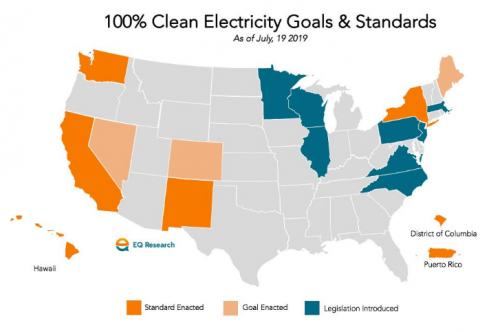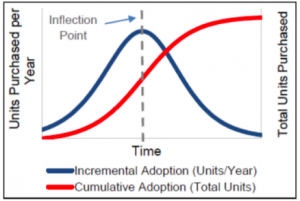You may have missed it on the summer festival calendar, but Indianapolis just hosted the Lollapalooza of the utility industry. In late July, hundreds of utility regulators gathered for the National Association of Regulatory Utility Commissioners (NARUC) Summer Policy Summit. For a certain wonky set who couldn’t make the trek, trust me: the FOMO is real.
Customer-centricity was a major theme of the conference, especially as the utility industry shifts from a centralized, large-scale infrastructure model to one that relies on distributed resources and an increasing array of customer choices. To quote Duke Energy’s CEO Lynn Good during the opening keynote, “It is really important that we keep our customers front and center in all of the decisions we are making about the transformation of our industry.”
After attending this year’s Policy Summit, it’s clear that utility providers are ready for a more customer-centric grid, and regulators have more tools than ever to ensure that utilities deliver value to consumers. Here are a few key insights that the Uplight team and I took away from our time in Indianapolis.
1. Regulators Are Rethinking the Value of Customer-Side Resources
In the age of the customer-centric utility, customers are playing a bigger role than ever through energy efficiency investments, demand response programs, distributed and community solar options, electric vehicles, and battery storage. Regulators convened panel discussions on each of these distributed energy resource (DER) technologies, and as economic policymakers used to managing large-scale investments like power plants, their key question in each session was, “How do we value these smaller, more distributed resources?”
Uplight’s VP of Market Development and Regulatory Affairs Tanuj Deora framed the issue aptly during a panel discussion on “Revisiting Paradigms for Decision-Making About Customer Side Resources”:
“Current approaches to customer-sited resource evaluation grossly undervalue and systematically under-deploy behind-the-meter assets, resulting in a less resilient, dirtier, and more expensive energy system.”
In other words, the prevailing planning processes and regulatory models in the U.S. do not account for the vast potential for customer-side resources, nor do they sufficiently calculate the benefits of these energy options. Those may include economic benefits, such as lower cost of energy supply or savings on grid infrastructure, but also better serving customer preferences, like the widespread demand for renewable energy options.
How can regulators act on the need to better value customer-side resources? E4TheFuture’s Julie Michals offered some solutions by introducing new national energy efficiency and DER standard practice manuals, which “serve as a universal benefit-cost analysis guidebook providing a common framework to support regulators, state energy offices, utilities, and other stakeholders.” These manuals can help commissioners and staff to recalculate the costs and benefits of efficiency and DER investments. By getting full value for the resources they provide, customers will maximize their value to and from the grid.
2. Clean energy transition marches on; regulators are catching up

Five states plus DC and Puerto Rico have passed 100% clean electricity policies, with 3 more enacting goals. Legislation is pending in 8 more states. (EQ Research)
A second key theme at NARUC was the rapid approach of a 100% clean energy future. With more states and cities joining the “100 Club” each year, regulators fully recognize they need to keep up with the pace of change. Indeed more than one quarter of the country’s electric system is on the road to 100% clean energy: “States with 100% clean energy goals or commitment represent 26% of all U.S. retail electricity sales,” according to a Rocky Mountain Institute (RMI) presentation.
With state legislatures and cities leading the charge on renewables and clean energy policies, clean energy regulation is a lagging indicator, and regulators understand there’s ground to cover to catch up. During one panel, an audience poll showed 75% of attendees saying regulators should “start now” to protect affordability, reliability, and gather support from states and stakeholders on policy approaches.
RMI’s suggested starting point for regulators and commission staff is to understand the taxonomy of 100% clean energy standards. Is the state committing to a renewables-only standard? Is it a carbon-free commitment? Carbon neutral? Each policy will require a different set of resource decisions that regulators will ultimately interpret for market participants and consumers.
3) Grid planning has never been more focused on the customer
A third insight from the Summer Policy Summit is that the business of grid planning—the core utility function of installing the “poles and wires”—has never been more interested in customer preferences.
In the past, grid planners captured customers’ preferences pretty simply—”more energy please.” They assumed a certain level of load growth each year with modifications for the particularities of each region and carried on with infrastructure planning. Today, with flat or so-called “negative load growth” (i.e. efficiency), more DERs, and changing customer behavior, grid planning has to take customers’ choices into account more than ever before. Planners have to think about not just load growth, but also shift, and customer adoption of various technologies. One panelist on the “Forecasting DERs for Planning Purposes” panel mentioned that planners adapting the Bass Diffusion Model’s “S-curve” to determine when technologies like solar panels and EVs cross the inflection point from early adopters to broad adoption.

Grid planners are using variants of the Bass Diffusion Model to project consumer adoption of DER technologies.
A panelist from SMUD emphasized that understanding the customer is key to successful grid planning. The utility uses demographics and firmographics, as well as customer sentiment, to adapt basic diffusion models to its specific customer base and help answer the question, “Is this customer more likely to adopt a certain technology than another?”
Whether in DER adoption, renewable energy goals, or grid planning, the new orthodoxy is to “know the customer better than they know themselves.” Utilities and regulators are getting more comfortable with understanding not just demand projections but customer adoption propensity. And, judging by the discussions at NARUC, no one jurisdiction or utility has it all figured out. They are looking to leverage tried and true models and solutions that are used across millions of households and businesses.
To bring it back to the opening keynote, the utility industry has a can-do culture. As Lynn Goode put it during the opening session, “When the vision is clear, no other industry can execute and lead like ours.” As the Uplight team heard in Indianapolis, the utility customer-centric vision is crystal clear, and the leadership is there.
Now let’s execute.
By: Brian Bowen,
Brian Bowen is the Director, Market Development and Regulatory Affairs for Uplight. He works with Uplight and our utility partners to promote policies and programs that benefit customers and decarbonize the grid. He lives in Chicago.




